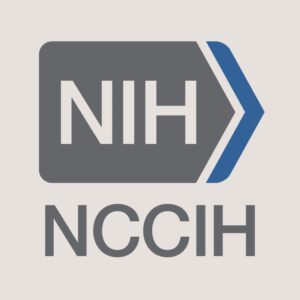 By: Malcolm Herman
By: Malcolm Herman
The National Institutes of Health is comprised of 27 institutes, all of which deal with specific disease conditions and general health. There is no institute for chronic pain. One of the institutes is the National Center for Complementary and Integrative Health (NCCIH). NCCIH was originally called the National Center for Complementary and Alternative Medicine (NCCAM), but in 2014 the name was changed in order to “advance the position that these complementary therapies should be ‘integrated’ with and not used as an ‘alternative to conventional medicine.’” Integrative health means the treatment of the whole person as opposed to separate organ systems. NCCIH promotes the idea of coordinated care among different health care providers by bringing conventional and complementary approaches together to care for the whole person.
NCCIH is currently finalizing its five-year plan, which will emphasize the need to treat the whole person and will promote efforts to:
“determine the value of complementary health approaches in enhancing cognitive, emotional, behavioral, and physical resilience and well-being in people who are subjected to stressful or adverse circumstances … NCCIH is also interested in the mechanisms of how natural products may work to increase resilience to psychological and environmental stressors, such as sleep disruption, pain, unhealthy diet, exposure to pathogens, or inflammation. There also is a need to understand mechanisms by which managing psychological stress and improving sleep may counteract pathological processes such as inflammation and restore healthier immune, endocrine, and metabolic responses.”
To many of us, there is a fair amount of irony in these goals, since numerous medical providers and advocacy organizations, including U.S. Pain Foundation, have been promoting a similar vision for as long as we can remember. The immediate reaction is, therefore: better late than never, but how long is the next phase going to take?
Impediments to implementation
NCCIH is fully aware of the countless impediments to the implementation of its goals (access, affordability, health care disparities, and so forth), but it does not consider two fundamental questions.
Firstly, isn’t there a basic contradiction inherent in the study of complementary approaches based on treatment of the whole body with the same scientific techniques traditionally used to study the effectiveness of traditional medications or treatments (e.g. physical therapy for sciatica, surgery for low back pain or NSAIDS for fibromyalgia)? The draft five-year plan states that interventions such as meditation and acupuncture affect the central mechanism of pain perception and processing, and it goes on to discuss the “scientifically plausible mechanisms” for these interventions. However, many of these interventions are rooted in essentially Eastern philosophies of medicine. They are known to be effective in Eastern medicine, but now we are attempting to analyze them by employing the standard techniques used for studies of Western remedies, namely seeking “scientifically plausible mechanisms.”
Secondly, are we attempting to analyze whole-body treatments using the traditional techniques, which the NCCIH acknowledges are designed for the analysis of separate organ systems? For example, in traditional Chinese medicine acupuncture is considered to balance the flow of energy or life force flowing through pathways (meridians) in the body, with the goal of rebalancing the energy flow. Similarly, traditional mindfulness is rooted in Buddhist and Hindu teachings. Buddhism includes a journey toward enlightenment, which encompasses attention, awareness, and being present. Is it appropriate to assess these holistic systems using western technology such as fMRI machines or pain scales?
The westernization of Eastern medicine
Over the past few years, Western cultures have adapted such treatments to the Western taste. For example, licensed acupuncturists undergo rigorous education and fieldwork, but there are also practitioners of acupuncture who undergo brief courses and acquire minimal education in the holistic elements of the treatment, regarding it more as the mechanical insertion of needles. There are practitioners of mindfulness who essentially employ it as a relaxation technique (artistic mindfulness, interpersonal mindfulness, forest mindfulness). Similarly, yoga is frequently presented as just another exercise program with all sorts of Western adaptations (prenatal yoga, sweat yoga, and even goat yoga). Such adaptations may provide an element of pain relief and the placebo effect is not to be discounted, but they are a long distance away from the original, holistic health care approaches that are so successful in Eastern culture.
The westernization of Eastern medicine into easily marketable packages runs counter to the NCCIH’s definition of “integrative health” as the treatment of the whole person as opposed to separate organ systems. This raises the question: are we attempting to analyze a three-dimensional treatment through a one-dimensional lens?
As NCCIH moves forward with its draft five-year plan, I hope that there will be more acceptance that Eastern medicine and its treatments have succeeded because they are holistic and reflect local cultural norms and philosophies of life. They are not “complementary” or “alternative.” Unless we educate our medical professionals about the importance of treating the whole body, we will not be able to address the fundamental health issues underlying the prevalence of chronic pain in our society.
About Malcolm Herman

Malcolm Herman worked as an attorney in Maryland for 25 years. After his wife, Gwenn, was injured in an automobile accident, Malcolm became active in the chronic pain community and assisted Gwenn as she created Pain Connection, a nonprofit in Maryland, which is now part of U.S. Pain Foundation. Malcolm previously served as a director of Pain Connection and is now director of the National Coalition of Chronic Pain Providers and Professionals (NCCPPP), a program of U.S. Pain Foundation. He and Jennine Watson will be launching a specialized support group for caregivers and care partners in January through Pain Connection.
